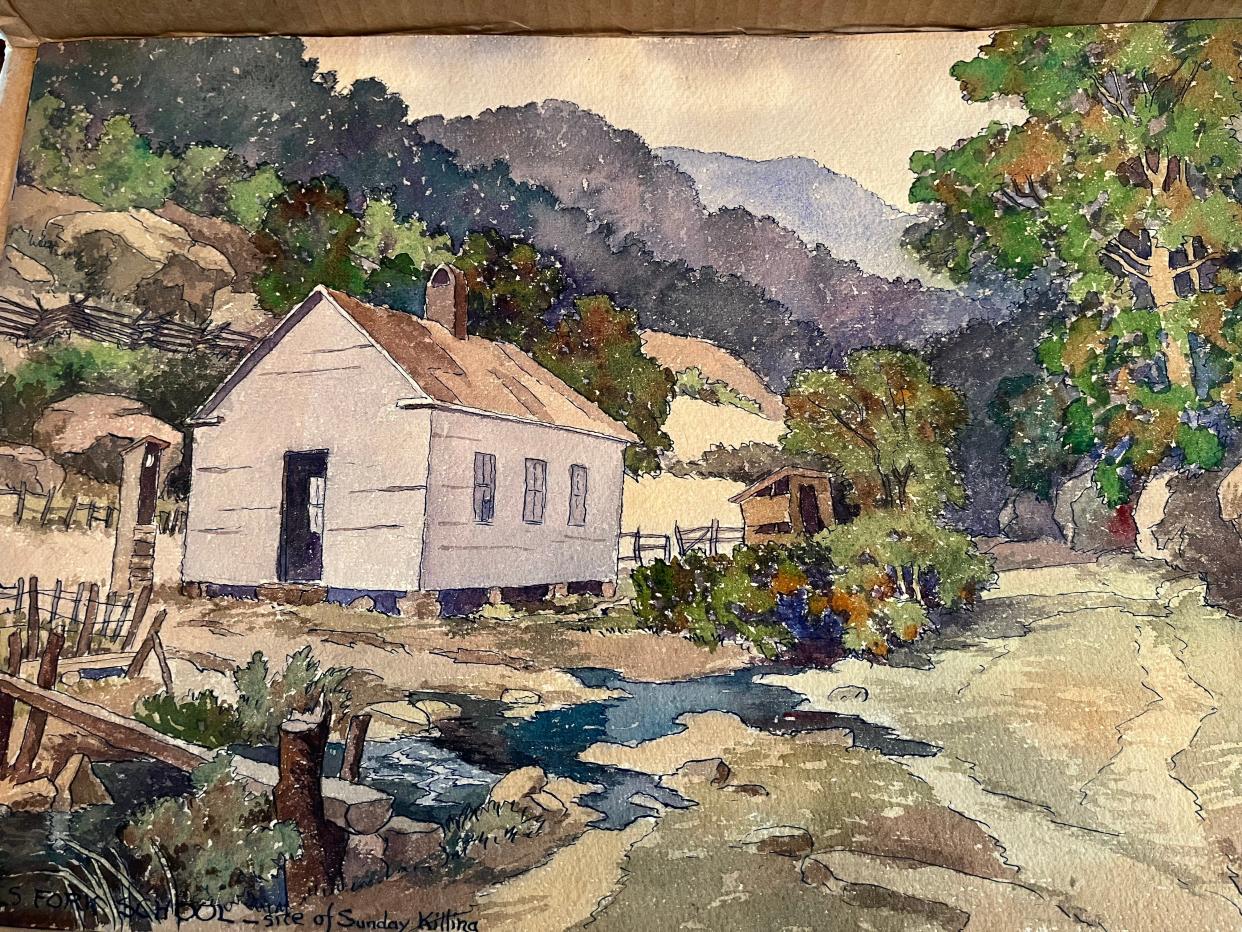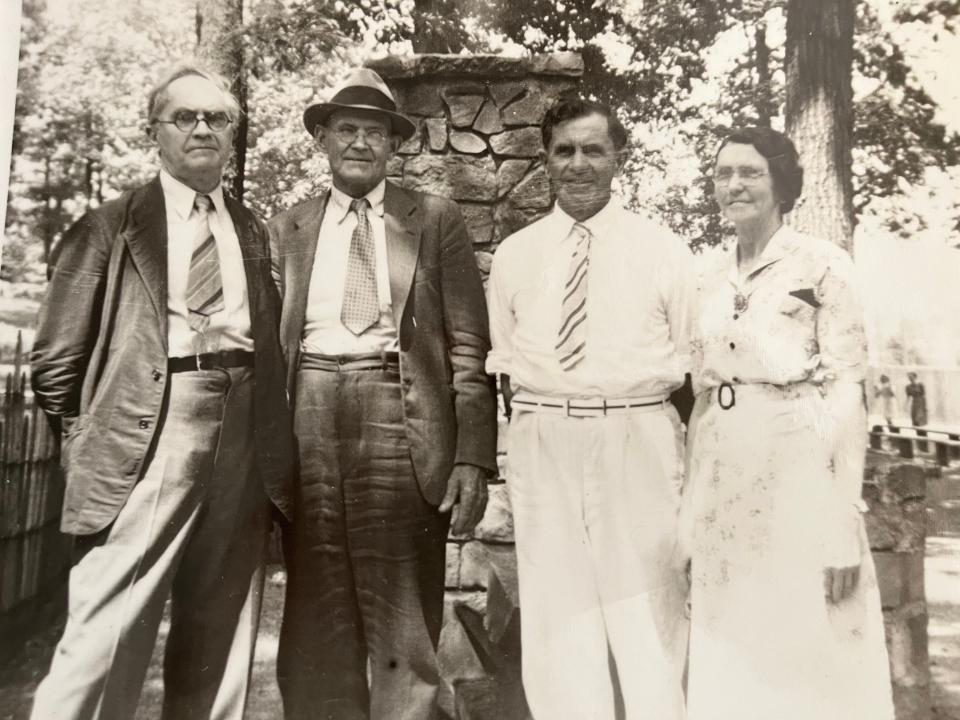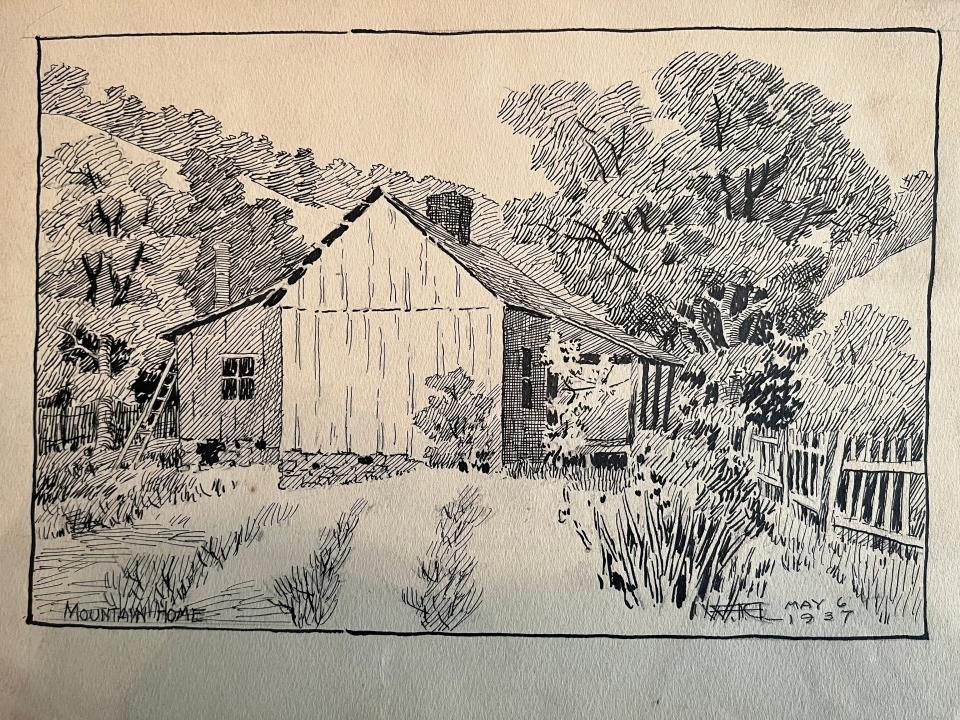Hooked on History: Gilmore native gained fame as watercolor artist

Tuscarawas County native William Franklin Gilmore developed a strong regional reputation as a watercolor artist, creating more than a thousand drawings in his lifetime.
His works depicted scenery in Ohio, Kentucky, Tennessee and the Carolinas. Some focused on his old hometown of Gilmore in southern Tuscarawas County, including West Union United Methodist Church and Devil's Den.
He taught art in Canton public schools from 1898 to 1931 and was considered the dean of Canton artists when he died 1946. His paintings were exhibited several times at the Massillon Museum.
"During the last 15 years of his life, Mr. Gilmore's watercolor paintings were noted for their extraordinary brilliance, which he attributed to a special technique which he developed," his obituary in the Canton Repository said. "Instead of mixing his bright colors, he placed them in juxtaposition on the white paper, and permitted the colors to blend together by optical illusion."
A relative, Greg McFee, is writing a book on Gilmore's life.
"The running theme in his life that I've gotten from everything was he was a strong Christian. He loved the outdoors. Most of his paintings are of the outdoors," McFee said.

Gilmore was born in a log house in Rush Township, a short distance from Gilmore, on April 1, 1865, two weeks before the assassination of Abraham Lincoln. He was the oldest child of Gordon and Roann Lakin Gilmore. McFee's great-grandmother, Lessie McFee, was Gilmore's sister.
Frank, as he was known, began teaching at age 19. He taught in Gnadenhutten and later Conover, Ohio. He was the principal of the school at Conover, but when a fire destroyed the building, he lost his job.
That's when he decided to become an artist. He enrolled in an art school in Columbus. Following graduation, he worked as an illustrator at an engraving firm.
Early in 1898, he learned that the job of supervisor of drawing and penmanship was open in the Canton schools. He landed that job, and continued to teach in the school district until his retirement.
After his retirement, Gilmore spent a year traveling on the course of the old Sandy & Beaver Canal from Bolivar to Smith's Ferry, Pa. He documented the canal with his paintings and by talking to people, McFee said. Gilmore used the information he gathered to publish a book on the canal.
In 1935, he accepted an offer as art instructor at Union College, a school in the mountains of southeastern Kentucky. He spent several summers at the school, and, in his spare time, made trips to Cumberland Gap and Cumberland Falls to paint.
Gilmore was one of the founding members of the Canton Art Institute in 1935. He taught classes in art for the education program without pay.
He was awarded honorary annual membership by the Ohio Watercolor Society, a group restricted to 50 artists who submit works around the country in a circulation exhibit. He was awarded first prize in the print division of the 1939 May Show at the Canton Art Institute and was a regular exhibitor every year.

In the summer of 1944, Gilmore took Cleveland Plain Dealer columnist Grace Goulder and several others on a tour of southern Tuscarawas County.
The trip began with lunch at Miller's Restaurant on Water Street in Uhrichsville, where they dined on chicken pie, country style, and homemade berry pie. Then they headed on to the town of Gilmore, founded by Frank's great-grandfather William Gilmore, and to Frank's boyhood home in Rush Township.
Goulder wrote that the house and barn at the family farm were empty.
"Where Mr. Gilmore's mother once had had a garden, scarlet rambler roses rioted through the weeds and spilled over the white picket fence," she wrote. "Giant hydrangea blossoms stood at the front door."
She continued, "The view from the front of the house is north toward Uhrichsville, over valley land banded with blue hills on the horizon and a Puritan's prim white church cutting into the sky line, the Kennedy Church two and a half miles away, Mr. Gilmore said.
"Looking in the other direction, from the back porch, was gently sloping pasture land with a spring in it, and beyond it square patches of yellow ripening wheat and green corn and oats of still another green."
They then stopped at the house of Sarah Ann Sanders, 84, who lived alone. Part of her property included the famous Devil's Den.
The group wanted to visit the site. "But you can't drive to it," Sanders told her guests. "You'll have to walk, and it's quite a piece."
The group walked through a forest of beech, tulip and maple before they reached the scenic spot. Gilmore told the others how one time he and his brothers came for a visit, and their pet dog slid through a stone opening to his death on the rock floor below.
"There was a rickety flight of steps built against the rocky wall and leading to the 'den' below, but we remained above, satisfied to look from safer distance," Goulder wrote.
Frank Gilmore died two years later on Feb. 22, 1946, at Aultman Hospital in Canton of a heart ailment. He was buried in the cemetery in Gnadenhutten.
Several months after his death, the Canton Art Institute held a memorial exhibition of his work.
"As a memorial to his untiring work for the institute, a 'Gilmore Memorial Award' was included in last spring's list of prizes at the May Show, and this was won by Roy E. Wilhelm for the best watercolor landscape," the Repository reported.
Greg McFee has devoted a considerable amount of time researching the life of his great-great-uncle and is planning a reunion of the Gilmore family on July 24.
Jon Baker is a reporter for The Times-Reporter and can be reached at jon.baker@timesreporter.com.
This article originally appeared on The Times-Reporter: History: Gilmore native gained fame as watercolor artist

